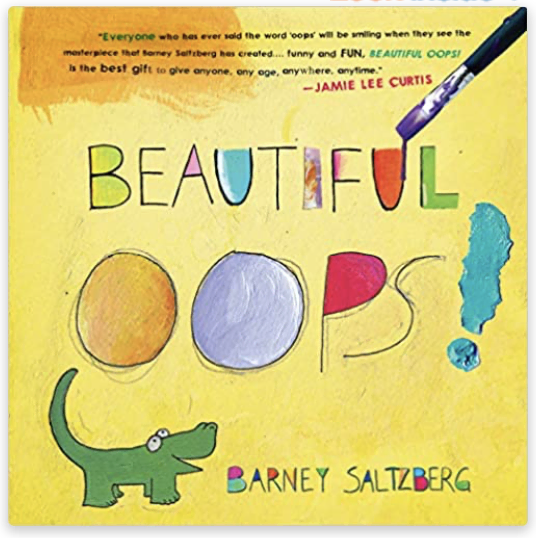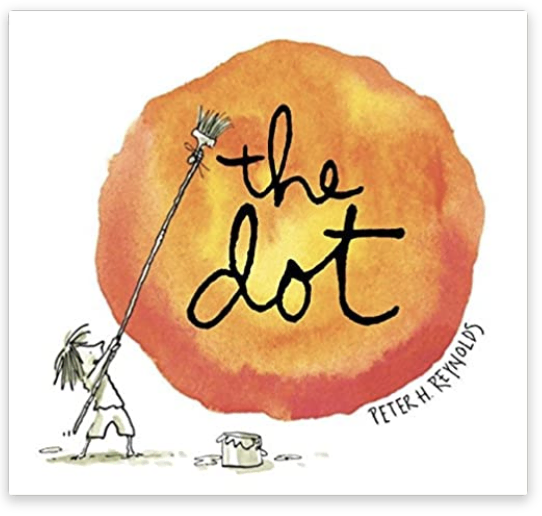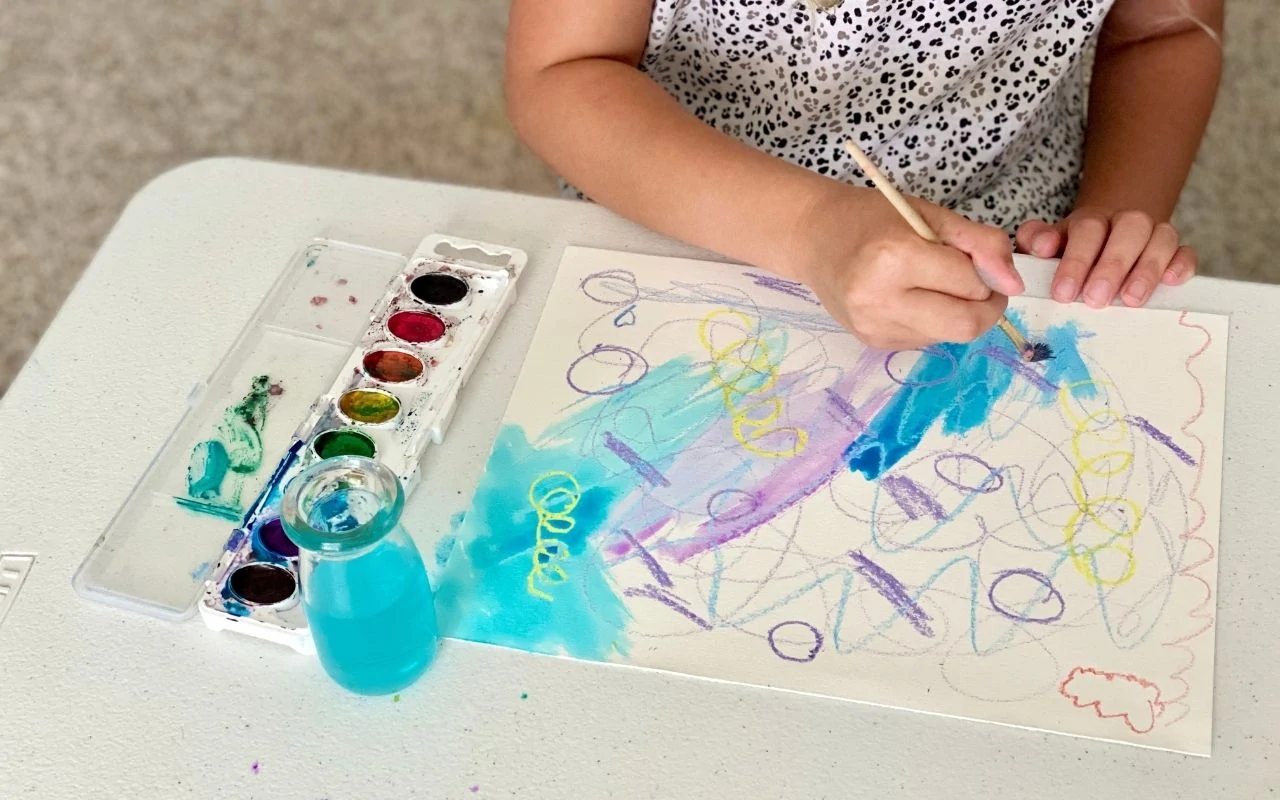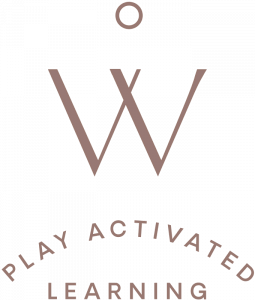In this invitation to play, a water-resistant medium is applied to a dry paper before painting. The crayon resists the watercolor paint. The watercolor paint can not adhere to the wax of the crayon. The crayon actually repels the paint. Instead, the paint will flow into the cracks and crevasses of the paper around the crayon marks.
This Play Invitation challenges children to develop their spatial relationships, imagination, and motor skills. This offers the opportunity to explore concepts such as transparency, resistance, absorption, repelling and contrast.
What Could Lead Us to This Play Invitation
- Children have been curious about mixing colors and materials;
- Children are excited about drawing and creating abstract compositions;
- Children have been exploring transparency and opacity.
Materials Needed
- Crayons
- Watercolor paper
- Watercolors
- Paintbrush
Setting up This Play Invitation
- Set the paper over a table and add the crayons.
- Prepare the watercolors with brushes.
Tips: Sally’s preferred watercolor is liquid watercolors. They are highly concentrated and provide rich and vibrant colors. Her favorite brand of liquid watercolors is Sargent. She buys the large set and it lasts the entire year. Check it out here. (This is an affiliate link. 100% of all revenue goes to non-profit organizations.)
Sally’s preferred watercolor paper is 140 lbs in weight. This provides an ideal surface. Her favorite brand is Canson – you can find it here. She cuts these sheets in half.
How to Create the Painting
- Invite the children to draw and explore crayon markings on their paper.
- They can use as many different colors as they wish.
- Once the marking is complete, let them paint the entire paper with watercolors.
How to Nurture the Natural Unfolding of the Child’s Identity During This Play Invitation
- Children have the right to struggle with their art-making. Their frustration may come from the difference between what they are able to achieve and what they want to create, or what they think we want them to do. Educators must acknowledge their feelings and offer support and encouragement. We can ask, “What would you like to change? How would you change it?”. Give children time to think of a solution. This will empower them and build on their flexible thinking and creativity. But when stuck, you can share a trick like painting over it with watercolors!
The Academic Learning Opportunities
- MATH: Spatial relationships: how the elements of their drawings relate to each other in the paper space.
- LANGUAGE: Acquisition of new vocabulary like transparent, opaque, resist, and reveal.
- SCIENCE: Material characteristics such as resistance, absorption, transparency, and opacity.
- ART: Explore combining materials to produce visual effects.
Extensions
Use white crayons on white paper and let the watercolors reveal their “secret marks.”
Book Recommendations

A spill. A smear. A smudge. A tear. When you think you have made a mistake, think of it as an opportunity to make something beautiful!

The perfect book to read to honor wherever we are in our art-making.

